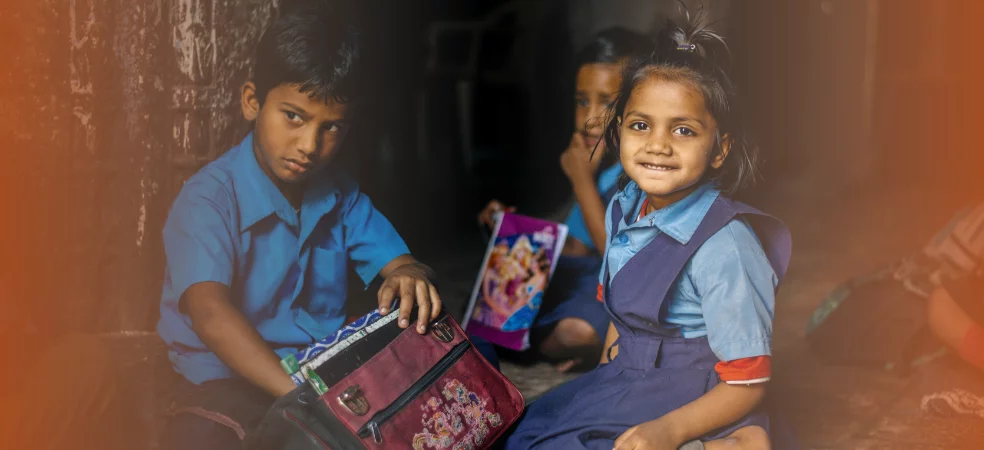Schools to reopen? The road ahead

“It has been a strange year”, a sentiment that has echoed world over since the dawn of 2020. Last year, soon after the government imposed a lockdown for the first time, children grappled with online learning. A couple of months into virtual education, schools decided to reopen. This temporary reopening of schools spread a wave of euphoria among students. It allowed them to meet their peers without a screen barrier. However, these enthused children faced disappointment as schools yet again closed just as quickly. Since then, the resurgence of COVID-19 imposed a series of lockdowns which continue till today. However, unlike last year, presently our situation is different.
Vaccination drives, reaching remote areas of the country, are helping people fight this disease. The daily cases have dipped alongside recorded fatalities in each state. With India’s population slowly building immunity, we can’t help but hope for a brighter tomorrow. In a press conference, the Director General of the Indian Council of Medical Research (ICMR), Balram Bhargava, hinted at opening primary schools. Taking an example of the Scandinavian countries, he maintained that teachers and other staff ought to be fully vaccinated before initiating this move. Research has shown that children’s immune system, unlike adults, shuts down the virus before giving it a chance to replicate itself. Hence, most children have mild or no symptoms.
Furthermore, according to a report, 67.6% of India’s population above 6 years have been found to have SARS-CoV-2 antibodies and that 85 percent of surveyed healthcare workers had antibodies against SARS-CoV-2.
As state governments individually mull over the decision to reopen schools, we too eagerly look forward to knowing what the future holds. While Karnataka, Madhya Pradesh, Chhattisgarh and Punjab are optimistic about schools returning to normalcy, the Delhi government remains firm on continuing online classes for kids.
How is a child’s mental and emotional well-being impacted at home?
Over 2.2 billion children were pushed to become online learners overnight. Virtual education zoomed at a time it was most needed. Online classes bridged learning gaps and restored normalcy. It anchored us to hope when there wasn’t any. Even though online education has carried the baggage of billions valiantly this far, it cannot replace in-school education.
A survey conducted in Spain and Italy showed that 85.7% of parents reported changes in their children’s emotions and behaviours during the quarantine. The most frequently observed changes were difficulty in concentrating (76.6%), boredom (52%), irritability (39%), restlessness (38.8%), nervousness (38%), loneliness (31.3%), uneasiness (30.4%), and worried (30.1%).
The lack of synergy between children hinders social and emotional development. Especially in a younger age group, it leads to isolation, irritability, poor attention and a disturbed sleep pattern. A physical classroom includes group activities and team projects which support the exchange of innovative ideas and organised effort. Disruption of this sacrosanct routine curbs students’ emotional communication with those their age.
The situation only worsens when specially-abled children are involved. Having a unique neurological and emotional development, these limitations incite aggravation, mood swings and conflict. Early intervention is deemed necessary to help children cope with the uncertainty of the pandemic.
What are the safety regulations that can be followed?
Post-lockdown, schools need to work in tandem with parents, communities, education departments and local governments to create safe and healthy learning environments.
In the new normal we will see:
- Increased concern around safety among students, teachers, staff and most of all, parents.
- Fear of sending children and loved ones to school.
- Frequent interruptions because of student absenteeism due to migration.
- Following government regulations on social distancing, health and hygiene.
- Students being at home for some part of the academic year.
Social distancing norms should be maintained at all times. Have only one student on each bench. If the bench is long then two students can sit while maintaining the expected distance.
Schools will be forced to cut the number of games and physical activity classes per week as they focus on completing the syllabus and safety. For relaxation, students should practice simple yoga asanas/ breathing exercises like Tadasana, Vrikshasana, Kapalbhati, Anuloma-Viloma and Pranayama. All students should wear masks and wash their hands before and after Yoga class.
All classrooms (including desks, toys, door knobs.), staff rooms and common areas should be sanitised every day with disinfectants. Students should carry a sanitiser with them. In addition, there should be sanitiser dispensing stations available outside toilets or at 2-3 vantage points on each floor. To learn more about the safety regulations, please download the handbook.
The future ahead
As India’s fastest-growing Ed-Tech company, we constantly try to support our partner schools every step of the way. It is our responsibility to keep students and educators safe and ensure excellent quality education is provided. Whatever the future may hold, we are ready to welcome new changes and build technology to stay in tandem with them.
LEAD is helping children become future-ready. To enrol your child in a LEAD Powered School: Fill the admission form now
.png)
.png)
.png)
.png)
